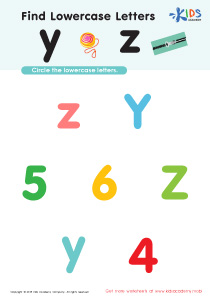Letter recognition Normal Uppercase Letters Worksheets for 6-Year-Olds
11 filtered results
-
From - To
Enhance your child's literacy skills with our engaging "Letter Recognition Normal Uppercase Letters Worksheets" designed for 6-year-olds. These carefully crafted worksheets make learning uppercase letters enjoyable and effective. Each sheet promotes letter identification and improves hand-eye coordination, providing a solid foundation for reading and writing. Our exciting activities, colorful designs, and playful exercises capture young learners' interests, making practice feel like playtime. Perfect for home or classroom use, these worksheets support your child's educational journey with fun and interactive content. Boost your child's confidence and prepare them for academic success with our comprehensive letter recognition resources.
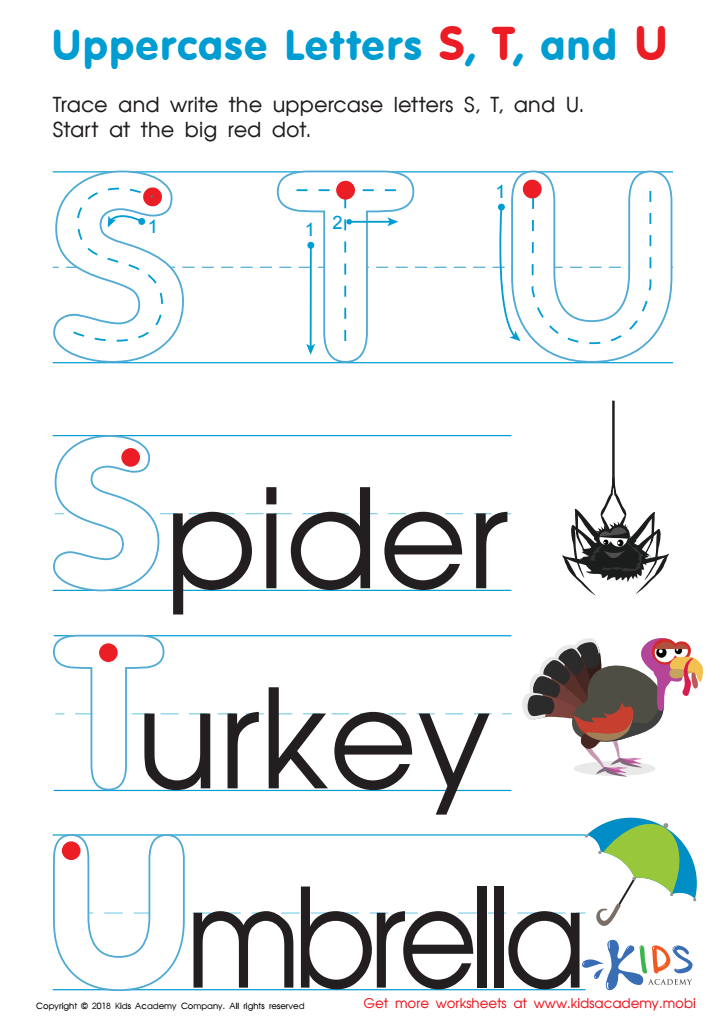

Uppercase Letters S, T, and U Worksheet
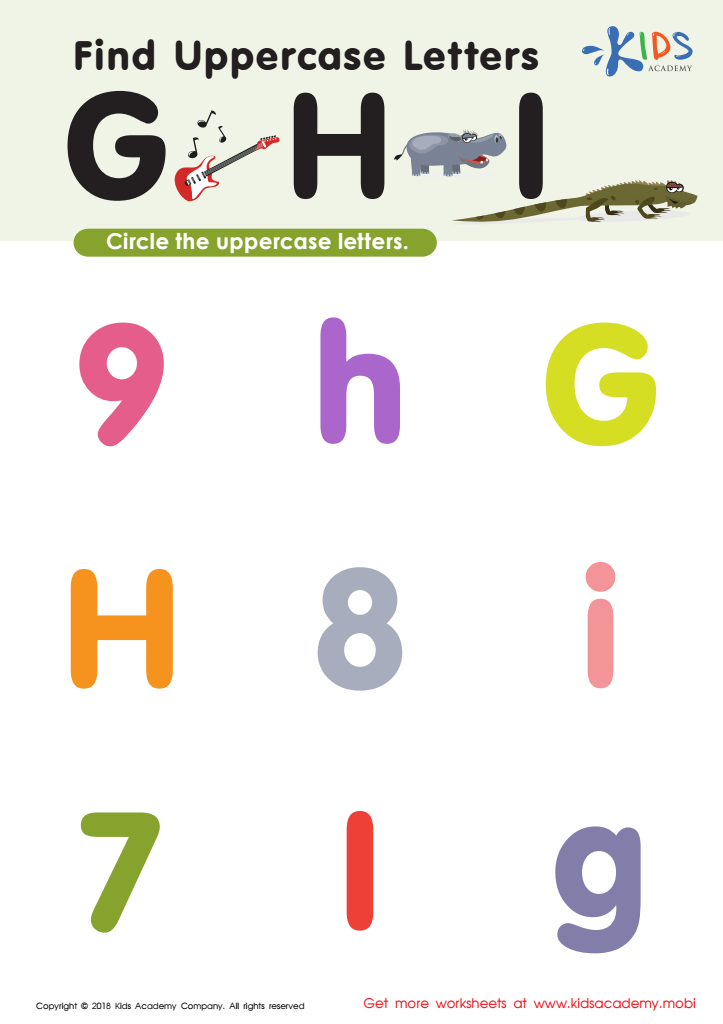

Find Uppercase Letters G, H, and I Worksheet


Uppercase Letters Maze Worksheet


Find Uppercase Letters Worksheet


Find Uppercase Letters J, K, and L Worksheet
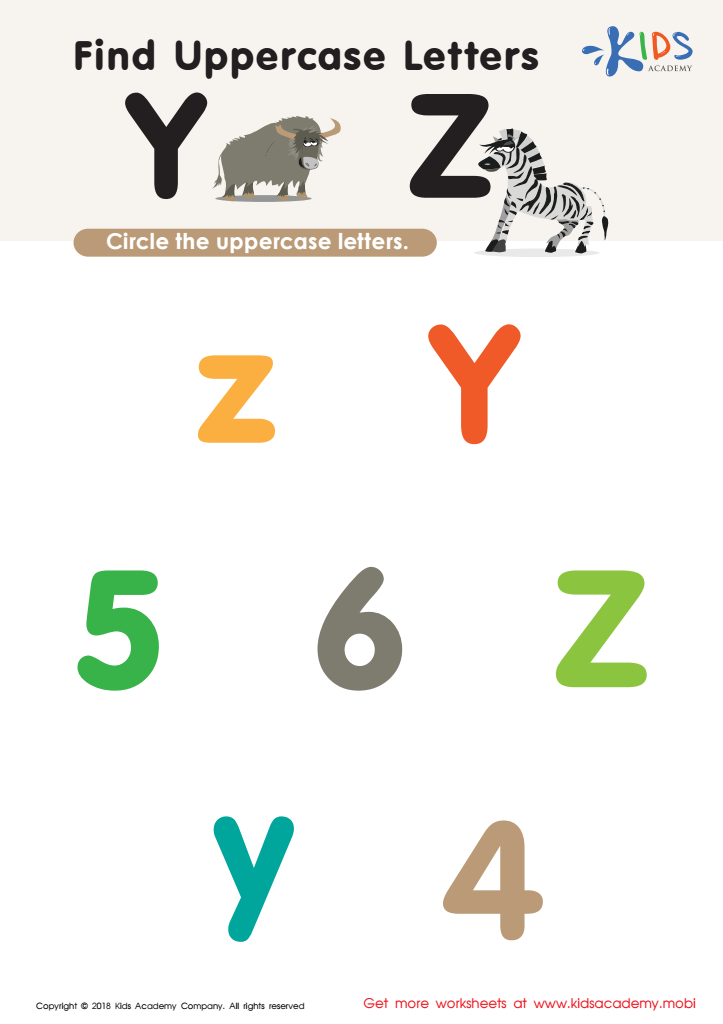

Find Uppercase Letters Y Z Worksheet
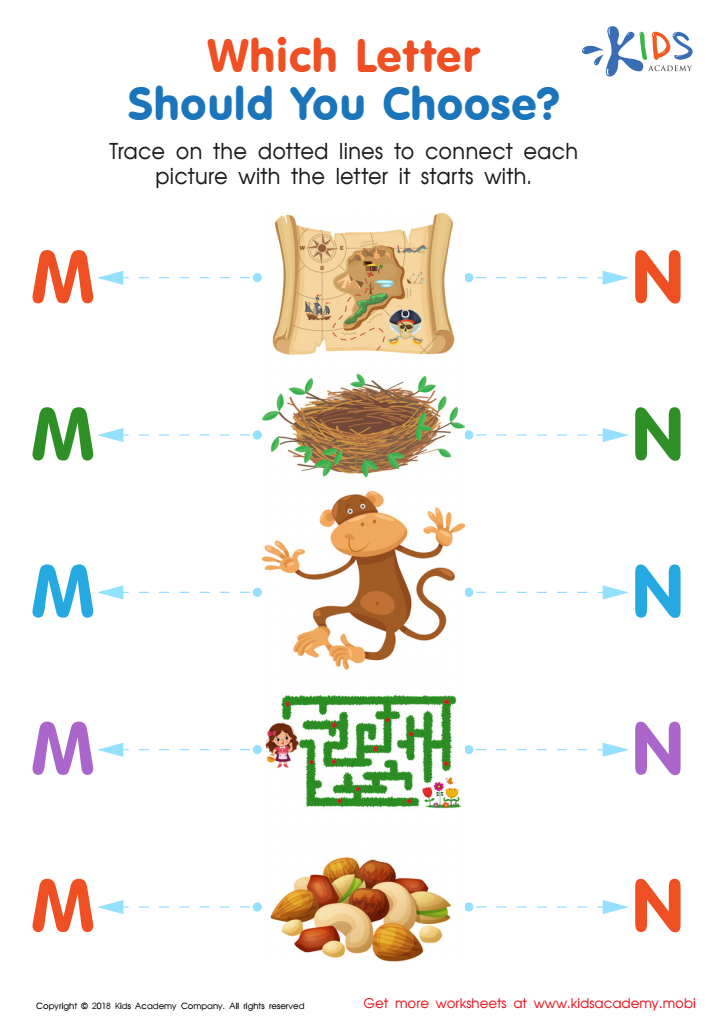

Which Letter Should you Choose? Worksheet


Find Uppercase Letters A, B, and C Worksheet


Find Uppercase Letters V, W, X Worksheet
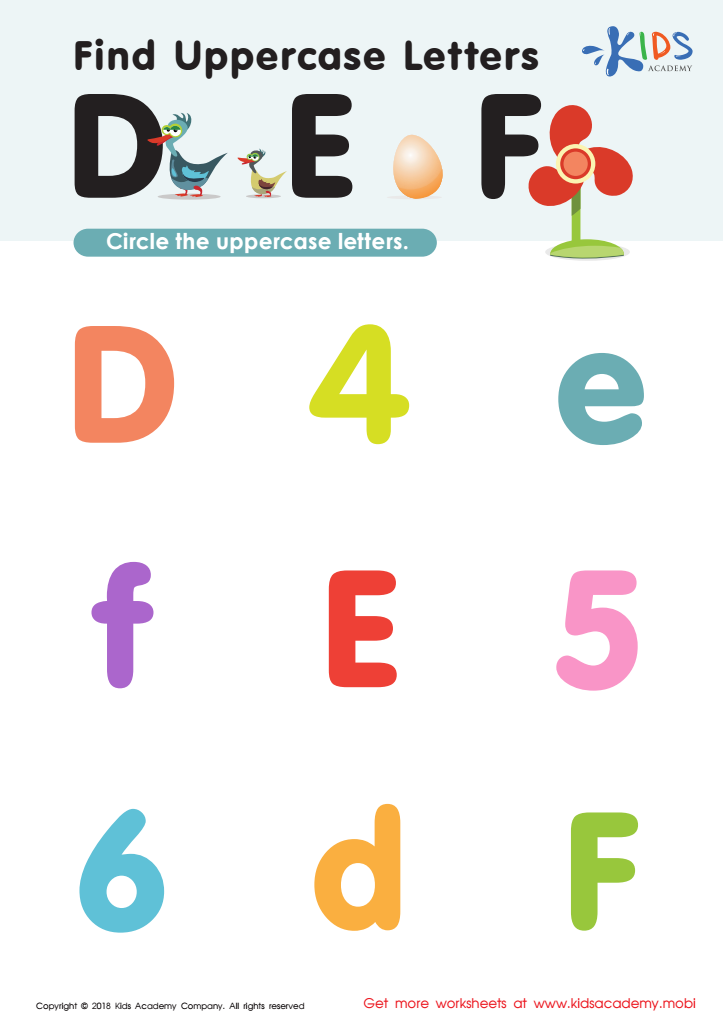

Find Uppercase Letters D, E, and F Worksheet
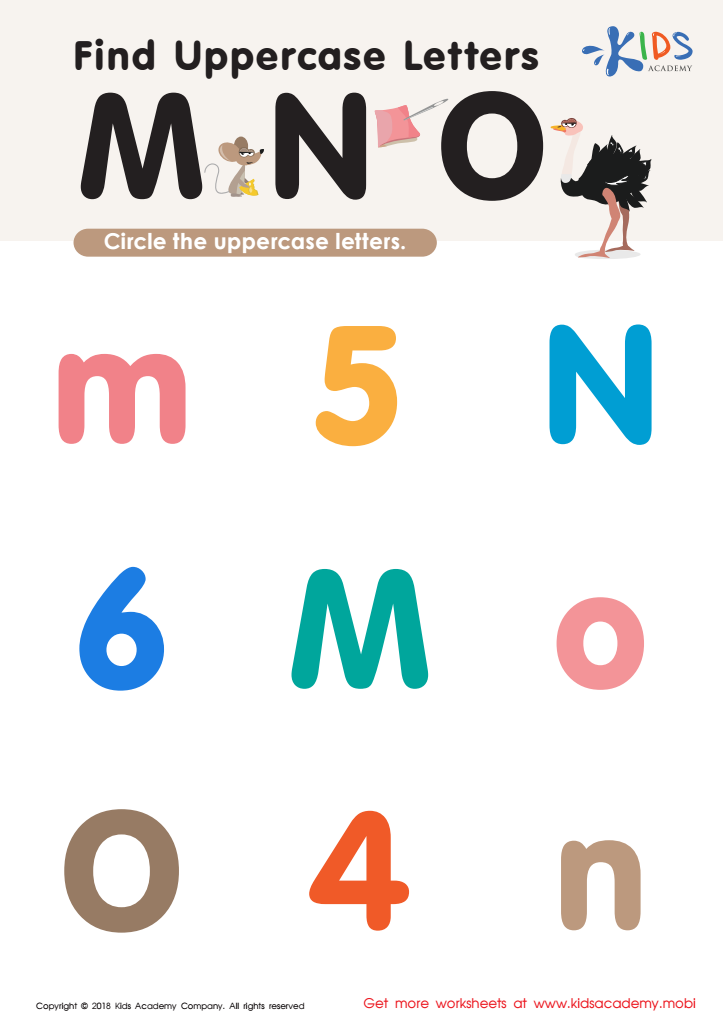

Find Uppercase Letters M, N, and O Worksheet
As an educator or parent, fostering letter recognition skills in 6-year-olds, particularly recognizing uppercase letters, is essential for foundational literacy. By this age, children are typically in kindergarten or first grade, where they begin formal reading and writing instruction. Recognizing uppercase letters plays a crucial role in developing their reading skills, as children first encounter written words and need to identify letters accurately to decode them.
The ability to recognize uppercase letters contributes significantly to a child’s ability to understand and manipulate sounds, an essential aspect of phonemic awareness. This awareness is the foundation for learning phonics, enabling children to connect spoken sounds to written symbols. Early mastery in this area leads to greater reading fluency, which correlates with better comprehension skills.
Moreover, proficiency in uppercase letter recognition aids children in writing. Start with uppercase letters, which are often simpler in structure and less varied than lowercase letters, can boost a child's confidence and motor skills. This is not just important for academics; strong literacy skills are linked to better communication abilities and overall cognitive development.
In addition, building this skill helps children engage more confidently with their environment, such as recognizing signs, labels, and names, promoting independence and curiosity. Thus, investing time in teaching children to recognize and write uppercase letters gives them a robust start to literacy, setting a foundation for lifelong learning.
 Assign to My Students
Assign to My Students









